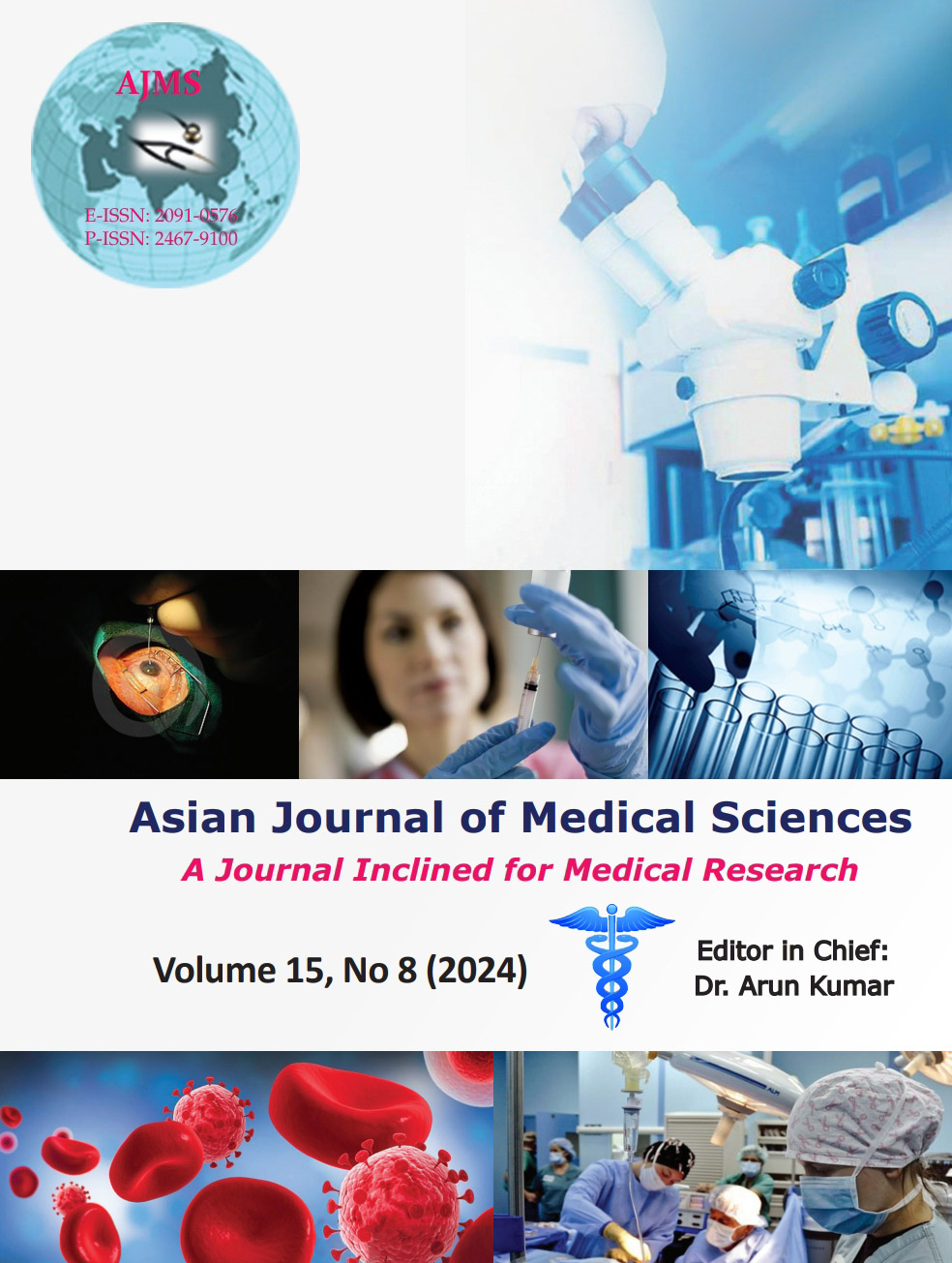Serum bilirubin at 24 h of life birth as a predictor of significant hyperbilirubinemia in preterm neonates
Keywords:
Hyperbilirubinemia; Serum bilirubin; Preterm neonatesAbstract
Background: As hyperbilirubinemia is one of the key contributors to brain damage and is crucial to identify those instances that are at risk as it is more prevalent and severe among the preterms. Many studies are available in the literature for terms babies but there is paucity of data for pre terms.
Aims and Objectives: The aim of this study was to assess serum bilirubin at 24 h of live birth as a indicator of significant hyperbilirubinemia in preterm neonates.
Materials and Methods: It was a prospective observational study conducted in the department of pediatrics of tertiary care center, Jodhpur on 150 preterms born within 33–36 weeks 6 days after considering the exclusion criteria in the study. Area under the receiver operating characteristic (ROC) curve was used to identify significant hyperbilirubinemia within 1 week of life, along with it the cutoff value of total serum bilirubin (TSB) at 24 h of life was calculated.
Results: A total of 150 enrolled preterm newborns were followed up. TSB at 24 h of life was proved to be significant using the ROC curve, where area under the curve is 0.96 which was statistically significant. Among 150 preterms, 70 newborns with TSB >4.2 mg/dL developed jaundice, and 65 babies (98.48%) required phototherapy. Hence, preterms with TSB >4.2 mg/dL have a significant risk of developing hyperbilirubinemia. (Sensitivity: 98.48%, specificity: 94.05%, negative predictive value: 98.75%, and positive predictive value: 92.86%).
Conclusion: TSB for preterms at 24 h of life can support to predict the significant hyperbilirubinemia successfully. Preterms with cutoff value of serum bilirubin level >4.2 mg/dL are observed to be more prone to develop significant hyperbilirubinemia requiring appropriate intervention at the earliest.
Downloads
Downloads
Published
How to Cite
Issue
Section
License
Copyright (c) 2024 Asian Journal of Medical Sciences

This work is licensed under a Creative Commons Attribution-NonCommercial 4.0 International License.
Authors who publish with this journal agree to the following terms:
- The journal holds copyright and publishes the work under a Creative Commons CC-BY-NC license that permits use, distribution and reprduction in any medium, provided the original work is properly cited and is not used for commercial purposes. The journal should be recognised as the original publisher of this work.
- Authors are able to enter into separate, additional contractual arrangements for the non-exclusive distribution of the journal's published version of the work (e.g., post it to an institutional repository or publish it in a book), with an acknowledgement of its initial publication in this journal.
- Authors are permitted and encouraged to post their work online (e.g., in institutional repositories or on their website) prior to and during the submission process, as it can lead to productive exchanges, as well as earlier and greater citation of published work (See The Effect of Open Access).




